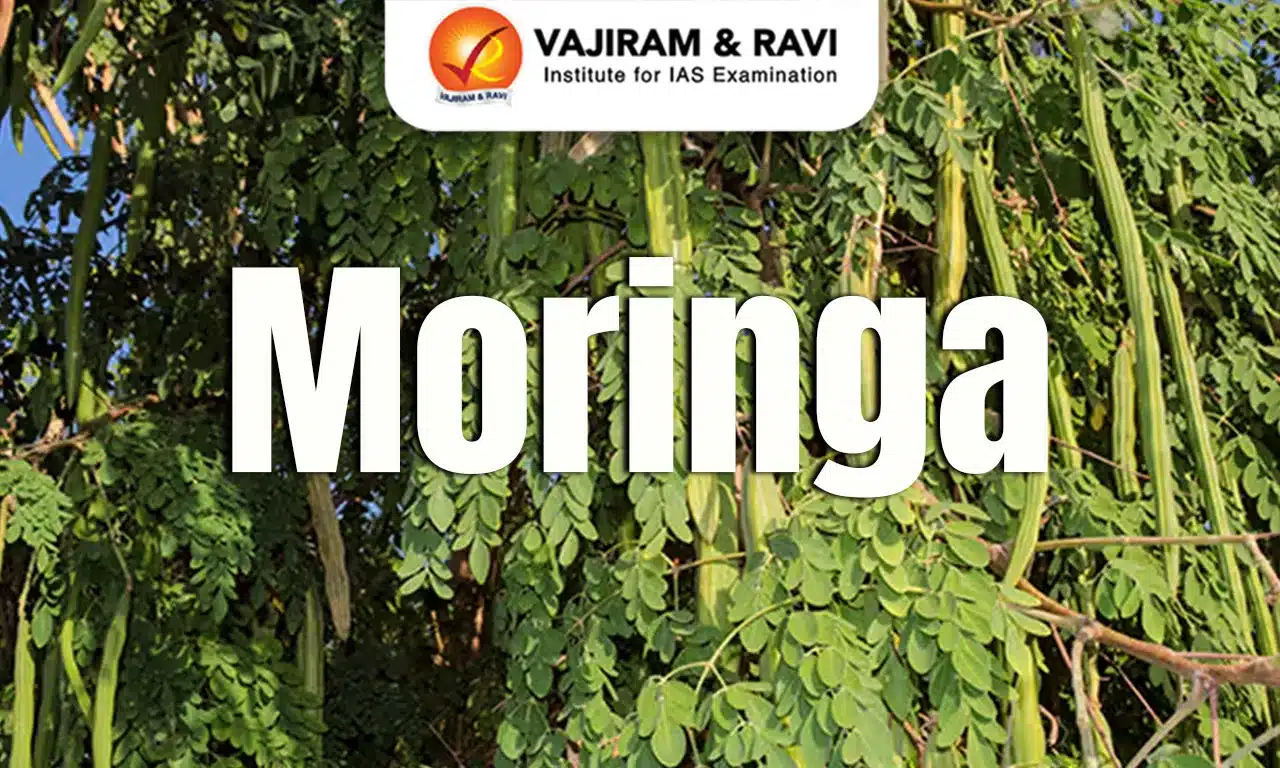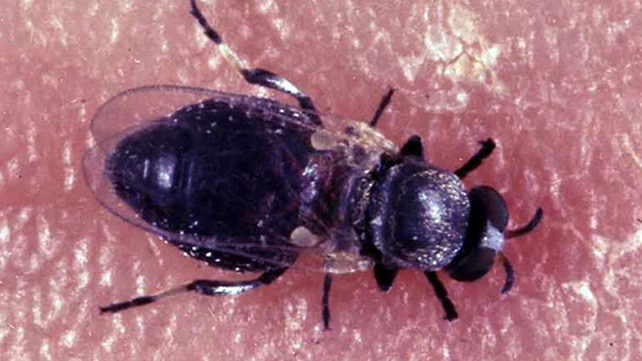Moringa Latest News
PKM1, a variety of Moringa oleifera, has had a global impact, especially in countries such as Senegal, Rwanda, and Madagascar on the African continent.
About Moringa
- It is known as the “tree of life” or “miracle tree,” and is classified as an important herbal plant.
- Its botanical name is Moringa oleifera, and it is native to India, which was introduced from India to Africa, Southeast Africa, and the Philippines in ancient times.
- Required climatic conditions
- It requires tropical and subtropical regions and grows at a temperature of about 25–35 °C
- It is a deciduous type of tree typically grown in tropical and subtropical regions across the globe
- It grows best in indirect sunlight and without waterlogging, and the soil should be slightly acidic to alkaline.
- The tree begins to bear fruit at 6 to 8 months of age.
- Distribution: It is widely distributed worldwide, but its indigenous origin is in India, Arabia and the East Indies.
- It is common in Asia, Africa, the Caribbean, Latin America, the Pacific Islands, Florida, Madagascar, Central America, Cuba, the Philippines, Ethiopia, and Nigeria.
Benefits of Moringa
- With its high nutritional values, every part of the tree is suitable for either nutritional or commercial purposes.
- The leaves are rich in minerals, vitamins and other essential phytochemicals.
- Extracts from the leaves are used to treat malnutrition, augment breast milk in lactating mothers.
Moringa FAQs
Q1: Is moringa a leguminous evergreen tree?
Ans: The Moringa (drumstick tree) is a leguminous evergreen tree.
Q2: What is moringa called in India?
Ans: Indian common name of Moringa oleifera Hindi mungna, saijna, shajna.
Q3: What is the scientific name of moringa?
Ans: Moringa oleifera
Source: TH
Last updated on November, 2025
→ Check out the latest UPSC Syllabus 2026 here.
→ Join Vajiram & Ravi’s Interview Guidance Programme for expert help to crack your final UPSC stage.
→ UPSC Mains Result 2025 is now out.
→ UPSC Notification 2026 is scheduled to be released on January 14, 2026.
→ UPSC Calendar 2026 is released on 15th May, 2025.
→ The UPSC Vacancy 2025 were released 1129, out of which 979 were for UPSC CSE and remaining 150 are for UPSC IFoS.
→ UPSC Prelims 2026 will be conducted on 24th May, 2026 & UPSC Mains 2026 will be conducted on 21st August 2026.
→ The UPSC Selection Process is of 3 stages-Prelims, Mains and Interview.
→ UPSC Result 2024 is released with latest UPSC Marksheet 2024. Check Now!
→ UPSC Prelims Result 2025 is out now for the CSE held on 25 May 2025.
→ UPSC Toppers List 2024 is released now. Shakti Dubey is UPSC AIR 1 2024 Topper.
→ UPSC Prelims Question Paper 2025 and Unofficial Prelims Answer Key 2025 are available now.
→ UPSC Mains Question Paper 2025 is out for Essay, GS 1, 2, 3 & GS 4.
→ UPSC Mains Indian Language Question Paper 2025 is now out.
→ UPSC Mains Optional Question Paper 2025 is now out.
→ Also check Best IAS Coaching in Delhi

















